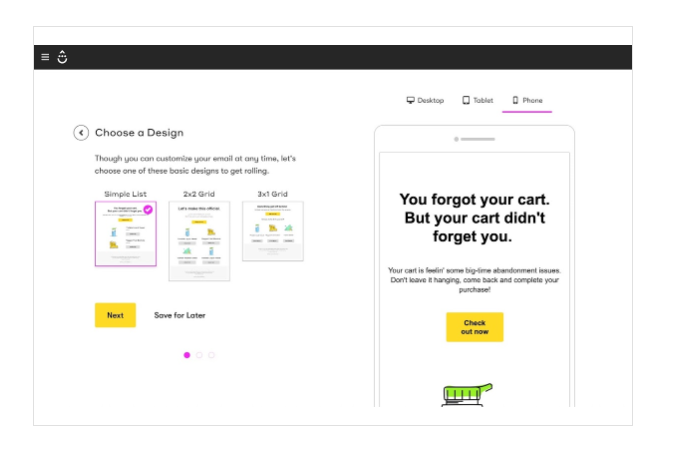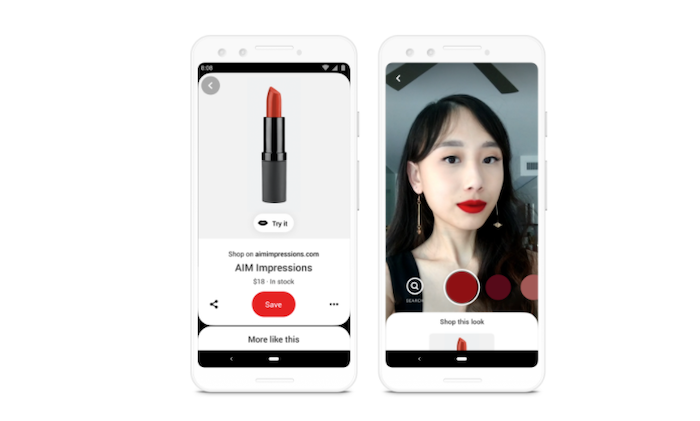
For better or worse, technology affects communication because it is a part of our everyday lives. It impacts the way we work, entertain ourselves, and stay in touch.
You might see the average elementary-aged child with their head buried in a smartphone and tempted to take a gloomy outlook on what technology has done to us. But is it all bad?
From a business perspective, you could argue that technology communication is beneficial.
With this in mind, here’s a breakdown of everything you need to know about how technology affects communication with customers, plus how to use these developments to your advantage.
How Has Technology Affected Communication?
Technology communication affects us continuously. As we make technological advances, new trends in communications emerge and often become the norm.
Machine learning and artificial intelligence will have a significant impact on how we communicate. Chatbots currently field over 25,000 conversations per month.
Furthermore, 75% of all companies now use automation tools. Many of the processes we automate involve communications, e.g., email marketing, messaging/chatbots, and social media engagement.
Another recent trend is the growth and widespread adoption of video conferencing technology. Approximately six in ten Americans use video chat platforms for social or work purposes. 38% of the six in ten had never previously used video conferencing.
Is Technology Good for Communication?
There are pros and cons to the ways we use technology to communicate with customers.
On the one hand, technology affects communication by making it easier, quicker, and more efficient. It allows you to track conversations and therefore provide better customer service. Tech also makes it easier to gather customer insights and improve the entire customer experience.
However, some fear technology affects communication by hindering our ability to build relationships with clients and will lead to brands becoming faceless entities.
The truth is that as long as you’re aware of such pitfalls, you’re less likely to fall victim to them. There are many more ways to use technology communication to build customer relationships than you may have realized.
How to Use Technology to Affect Communication Positively
Let’s take a look at six of the best ways you can implement technology to not only streamline communications but also make interactions more meaningful:
1. Monitor Brand Mentions on Social Media
You can use social media analytics to gather customer feedback, manage your online reputation, provide excellent customer service, and gain customer insights.
Though 56% of marketers use social data to research their target audience, it seems they aren’t using data in other useful ways as often.
Only 39% use data to build customer connections, 31% report their findings to management/colleagues, and 30% use it to analyze trends.
This gives you a chance to gain a competitive edge. Use a tool such as Hootsuite to track social analytics, monitor brand mentions, and track customer feedback.
Explain to your customers how you will use this data and their feedback to inform your brand and its social media presence. This will make followers feel more of an affinity with you as a brand that genuinely listens to its customers.
These days, many tools also include features that go beyond standard performance analytics, such as likes and shares, to allow you more in-depth insights, e.g., sentiment analysis.
There is tons of insightful data you can glean from analytics tools that can help you improve comms and, ultimately, your relationship with your audience.
2. Offer Immediate, 24/7 Communication
Some find the idea of chatbots as a means of communication impersonal, and maybe even creepy. However, it seems chatbots are here to stay. They are now able to answer up to 80% of routine questions.
If you can let a customer service bot handle frequently asked queries from your customers, saving you time and resources, it’s not just beneficial for you. It’s beneficial for your customers too.
Customers want a quick response time when they engage with brands. Customer service bots mean that customers can get the help or answers they need around the clock and in many cases, get answers immediately.
If you’re worried a chatbot could be impersonal, keep in mind that chatbots are able to hand the customer off to a real human when the conversation needs a personal touch. Services such as Tidio combine customer service bots and live chat on one platform. You might want to add a bot like this to your site or online store.
Some chatbot services, such as SnatchBot, also offer omni-channel communications.
This enables your customers to get in touch on their preferred channel, whether it’s Facebook Messenger, Skype, WhatsApp, etc.
Essentially, feature-rich chatbots are becoming a ubiquitous form of communication these days. It’s a technology trend that most will eventually adopt to streamline communications.
3. Automate Communications
Automation puts small businesses and entrepreneurs on an even playing field with large corporations. If you don’t always have the resources or time to speak to your customers directly, you may benefit from automated communications. Marketing automation boosts productivity by 20%.
Social Media Communication Automation
There are several ways to automate communications. For example, there are some social media management tools, such as HappyFox, which act as a sort of social media helpdesk. Using a tool like this allows you to automatically filter conversations and direct them to the right person.
Automation can provide useful, speedy responses to customer queries, issues, or complaints. After all, consumers say the most important attribute of customer experience is fast response times (75%).
Email Automation Communication
Email automation is also a huge time-saver. Tools such as Mailchimp or Drip can help you automate the following:
- Sending a series of onboarding emails
- Sending an invitation reminder
- Chasing up an abandoned cart
- Re-engaging subscribers who haven’t opened an email in a while
- Delivering special offers on occasions like birthdays
Use your chosen tool to set up behavioral triggers for specific emails. The example below shows the behavior “abandoned cart” that triggers an abandoned cart email.

You can also create email workflows based on user actions. For example, let’s say you send a webinar invitation. Those who sign up get put into one email sequence with event reminders and so on. Those who don’t sign up enter a different sequence with more nurturing to encourage a sign-up or they receive a different, more relevant offer.
4. Keep Track of Communications
When you have lots of customers it can be difficult to keep track of your interactions, even if you have the best intentions. However, the customer or client you’re speaking to doesn’t necessarily care that you have tons of other customers.
Your customer’s needs and their experiences are always going to be most important to them. If you can’t provide a seamless customer experience, then inevitably they’re going to be dissatisfied.
This kind of thing can have an impact on your business. The majority of consumers shop more with companies that offer consistent experiences.
This is where technology affecting communication comes in. A CRM (customer relationship management platform) means you can keep track of all interactions with clients or customers across multiple communication channels.
You’ll save all of the vital information for each client, record notes, monitor the status of sales, etc. on a platform that may look something like this example from Zoho:

This means even if your customers speak to a new team member, that person can have all of the client’s information right there in front of them to make sure they offer a personal and valuable conversation.
There are many popular CRMs out there, such as Zoho, HubSpot, and Salesforce. Choose one that fits your budget and the size of your company. Also, consider whether the CRM allows for integration with other software you might need and if its features are going to allow you to work collaboratively and efficiently.
5. Make Self-Service Easy
Nowadays, some technologies seem like they belong in a Sci-Fi movie. For example, you can order products by voice command on IoT devices and even try products via augmented reality.

The point is, thanks to technology communication, sometimes you won’t have to interact with customers on a personal level at all. Many consumers prefer that these days. Over 60% of US consumers opt for a digital self-service tool such as a website, app, or voice response system when they have a simple inquiry.
It’s of the utmost importance that you make it as simple as possible for customers to find the information they need for themselves. There are a few ways you can do this.
First, we’ve mentioned chatbots that answer routine queries.
Another option is to put a forum or knowledge base on your site. Figure out what kind of information both potential and existing customers need to know. You can do this by carrying out surveys or gaining insights from your sales and customer support teams.
Then serve up the information in the form of help articles, onboarding emails, walkthrough guides, video tutorials, and so on.
Even when communication isn’t a two-way thing, you need to have the tools in place for customers to self-serve.
6. Make the Most of Video Chat
The shift towards remote working, freelancing, nomadic entrepreneurship, and the like has been on the rise for some time. Technology affects communication by making it possible to work closely with clients who may even be on the other side of the planet.
It is possible to maintain communications with clients from a remote setting, using apps such as Zoom, Microsoft Teams, and Google Meet. What you may still be getting used to, however, is how to get the most from video chat.
Be sure to make use of the features your chosen app has to offer. For example, utilize screen sharing on customer service calls as you’ll be able to show, rather than tell, a customer exactly how to fix their problem (or find what they need on your website).
As well as recording your session, some video chat services can also automatically transcribe the conversation for you. This makes it easier to save and search for key information at a later date in order to keep communications consistent.
However, be wary of features that may do more harm than good. For instance, a slideshow running behind your head while you’re talking is just going to distract your clients
You need to explore the capabilities of the video platform you’re using to make client calls more efficient and useful.
Conclusion
Yes, technology affecting communication has its downsides. But doesn’t everything?
It’s totally possible to use technology to communicate effectively and efficiently with customers. In some cases, you can even use tech to strengthen customer relationships.
This is particularly true as your business grows and you need to implement some kind of tool or software to help you stay in touch with your team or your customers.
How will you integrate a tool that aids communication in your tech stack?
The post How Technology Affects Communication appeared first on Neil Patel.
Original content source: https://neilpatel.com/blog/technology-communication/ via https://neilpatel.com
No comments:
Post a Comment